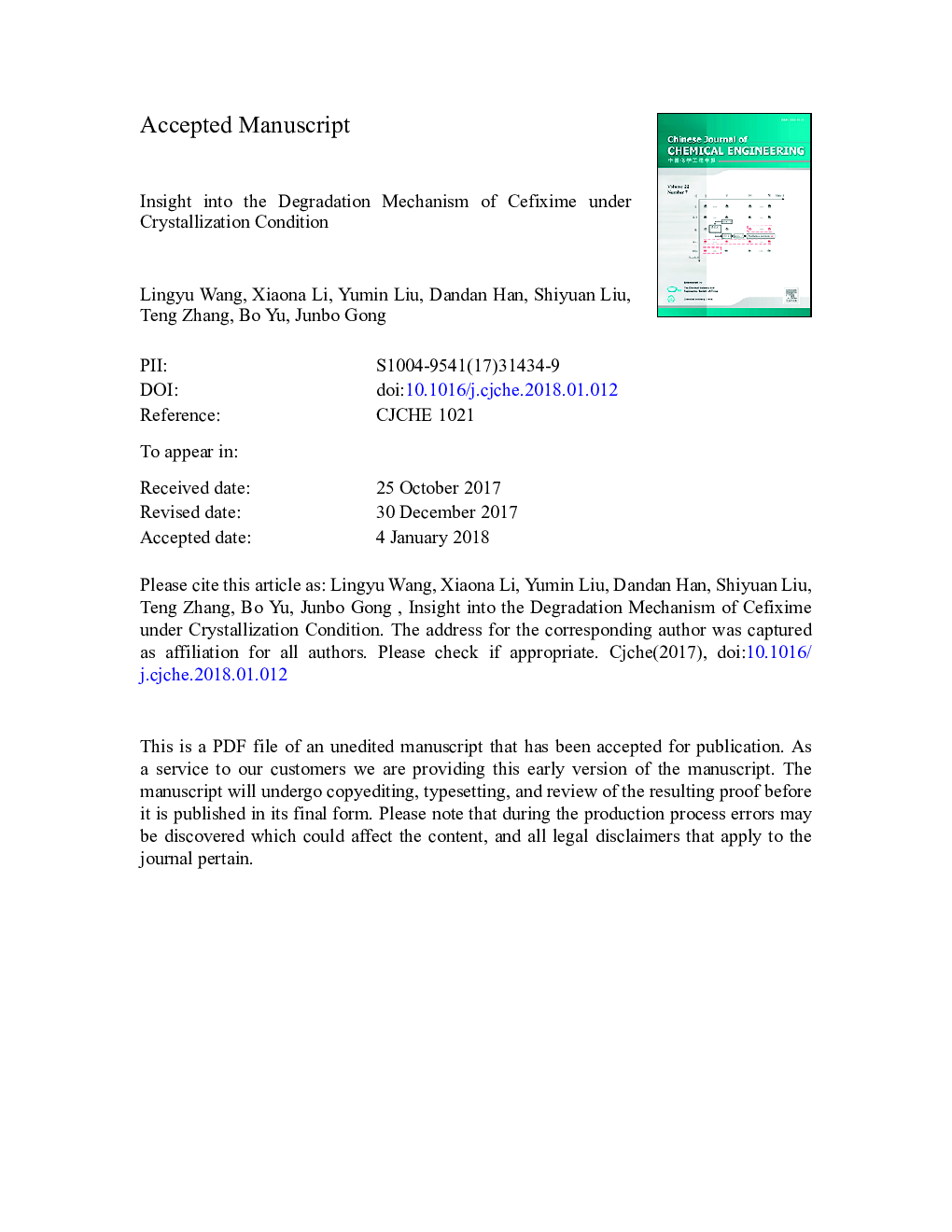| Article ID | Journal | Published Year | Pages | File Type |
|---|---|---|---|---|
| 6592721 | Chinese Journal of Chemical Engineering | 2018 | 25 Pages |
Abstract
The chemical stability of cefixime was determined by high-performance liquid chromatography (HPLC) under different conditions, including factors such as pH, solvents, initial concentration, temperature and additives. The degradation process follows the first-order kinetics. A pH-rate profile exhibits the U-shape and shows the maximum stability of cefixime at pHâ¯=â¯6. The stability in different pure solvents is ranked as acetoneâ¯>â¯ethanolâ¯>â¯methanolâ¯>â¯water, while the degradation rate of cefixime exists a maximum at the ratio of 0.6 in waterâ¯+â¯methanol mixtures. In addition, the degradation rate increases with the temperature increasing and the activation energy of degradation was found to be 27.078â¯kJ·molâ 1 in acetoneâ¯+â¯water mixed solvents. The addition of different additives was proven to either inhibit or accelerate the degradation. The degradation products were analyzed using HPLC, LC-MS and infrared spectroscopy, and the possible degradation pathways in acid as well as alkaline environment were proposed to help us understand the degradation behavior of cefixime.
Related Topics
Physical Sciences and Engineering
Chemical Engineering
Chemical Engineering (General)
Authors
Lingyu Wang, Xiaona Li, Yumin Liu, Dandan Han, Shiyuan Liu, Teng Zhang, Bo Yu, Junbo Gong,
